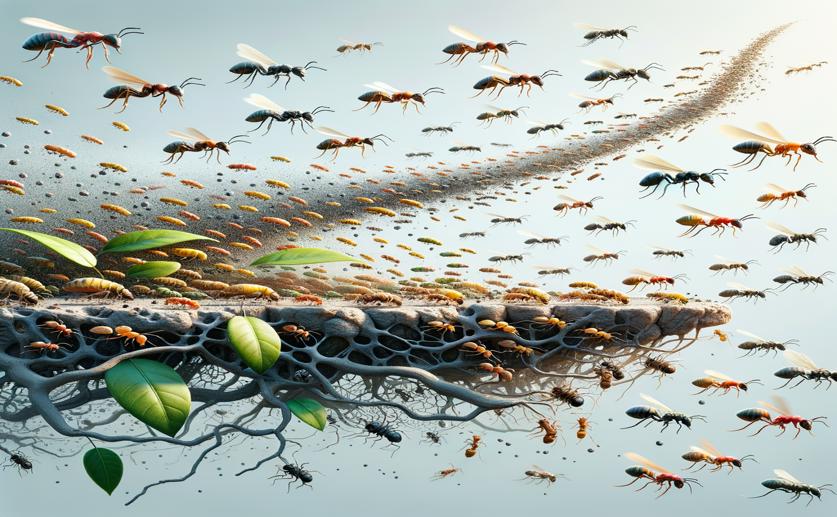
Best Ways Bugs Split Colonies for Success
Jim Crocker
17th April, 2024

Image Source: Natural Science News, 2024
Key Findings
- Study from the University of Würzburg shows how honeybee colonies decide between splitting up or a single queen starting a new colony
- The best strategy is either sending out a single queen or forming large swarms; there's no advantage to intermediate sizes
- The choice between these strategies depends on swarm size and the survival rates of swarms and single queens
EcologyAnimal ScienceEvolution
References
Main Study
1) Optimal fissioning strategies of social insects with respect to colony dynamics and nest founding probability
Published 14th April, 2024
https://doi.org/10.1007/s00040-024-00960-9
Related Studies
2) BEEHAVE: a systems model of honeybee colony dynamics and foraging to explore multifactorial causes of colony failure.
Journal: The Journal of applied ecology, Issue: Vol 51, Issue 2, Apr 2014
3) Consistent signatures of urban adaptation in a native, urban invader ant Tapinoma sessile.
4) Ant colony nest networks adapt to resource disruption.



 18th March, 2024 | Jim Crocker
18th March, 2024 | Jim Crocker